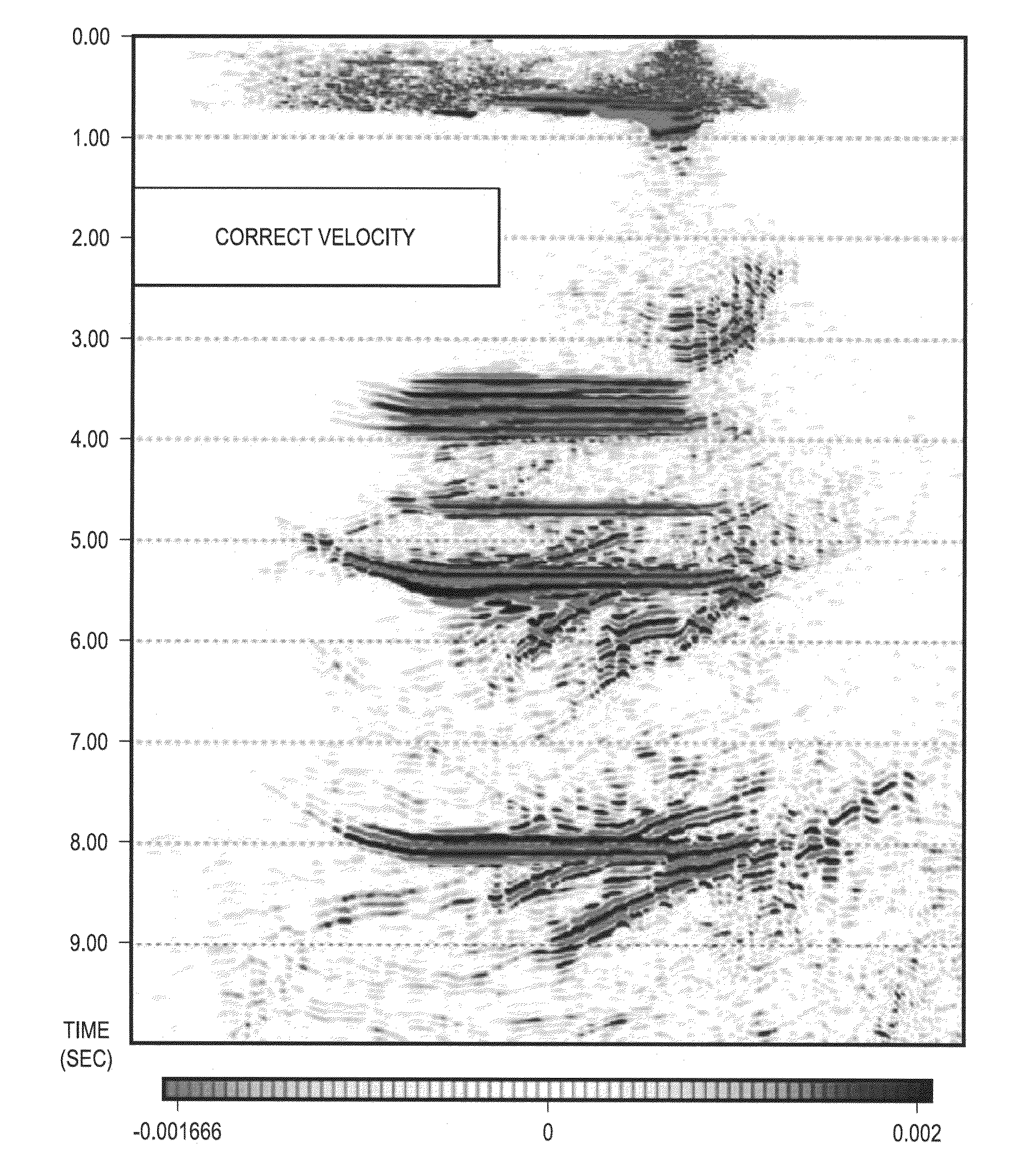Migration Velocity Analysis of Seismic Data Using Common Image Cube and Green's Functions
- Summary
- Abstract
- Description
- Claims
- Application Information
AI Technical Summary
Benefits of technology
Problems solved by technology
Method used
Image
Examples
Embodiment Construction
[0030]According to the present invention, a downward continuation based migration velocity analysis method is provided that can be used in structurally complex areas. This approach requires fewer migration velocity analysis iterations than conventional migration velocity analysis schemes and does not assume small velocity perturbations. The method of the present invention can also be used for target oriented migration velocity analysis, which is extremely useful for subsalt imaging. The technique is based on relaxing the cross correlation imaging condition that is typically used in shot profile migration. Instead of using only the zero lag cross correlation at each depth level, we retain other cross correlation lags are retained. The result, for a two dimensional dataset, is a three dimensional common image cube of migrated data that contains more prestack information than previous methods. Analyzing the data of the common image cube along a set of differing cross correlation lags, ...
PUM
 Login to View More
Login to View More Abstract
Description
Claims
Application Information
 Login to View More
Login to View More - R&D
- Intellectual Property
- Life Sciences
- Materials
- Tech Scout
- Unparalleled Data Quality
- Higher Quality Content
- 60% Fewer Hallucinations
Browse by: Latest US Patents, China's latest patents, Technical Efficacy Thesaurus, Application Domain, Technology Topic, Popular Technical Reports.
© 2025 PatSnap. All rights reserved.Legal|Privacy policy|Modern Slavery Act Transparency Statement|Sitemap|About US| Contact US: help@patsnap.com



